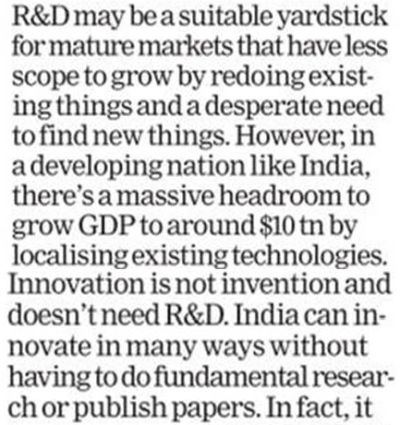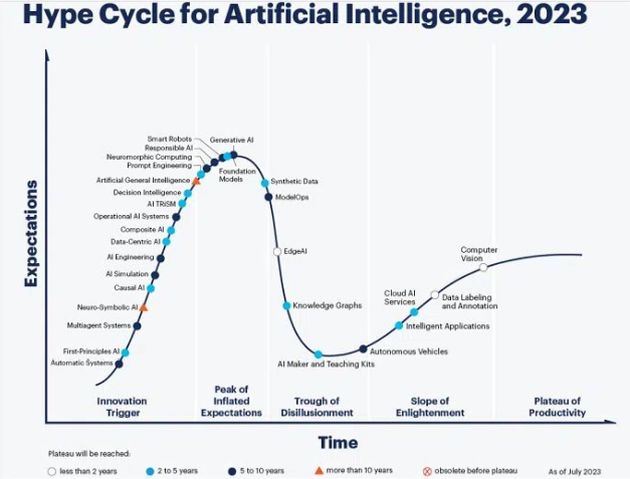Invention is a new thing.
Innovation is a new way of doing an existing thing that amplifies impact through broader reach.
Let me cite a few examples to drive home this difference.
1. AirBnB
During Oktoberfest, the city of Munich with a population of 1.2 million residents receives roughly seven million visitors. Naturally, all hell breaks lose. When I was in Germany during the early 2000s, hotels in the one hundred kilometer radius of Munich would be booked four to five years in advance for the entire tenure of the world’s largest festival, which typically begins in late September and ends on the first Sunday in October. It was customary for residents of Munich to rent out their spare bedroom to visitors during this period.
Roomshare was invented by Munich residents.
I don’t know if Brian Chesky was inspired by Oktoberfest when he founded AirBnB but his startup has an uncanny resemblance to the practice of room sharing that has been practice du jour in the Bavarian capital for ages. Oktoberfest visitors would learn about hosts through word-of-mouth, make bookings via telephone and pay with cash at the end of their stay. I’m not sure if they got a bill for the expense or if the host paid taxes on the income. In contrast, AirBnB published listings on a website and app, enabled credit card payments, set up reviews and ratings, and thus tech-enabled all the elements of sharing a room with a stranger. In the process, it scaled roomsharing to hundreds of cities all over the world.
AirBnB is an innovation, not an invention.
2. Uber
In 1998, I visited Singapore on business. The local office of my then employer was located in the famous Suntec Tower CBD area. When I was leaving the office in the evening to go back to my hotel, my coworkers warned me about the long lines for taxi just outside the building (Tower 4 IIRC), and tipped me off to prebook a taxi at the foyer. I saw a kiosk in the ground floor with a sign that told me to drop an SGD 2 coin into it. Seconds after I did that, I got a printed receipt giving me the registration number of the taxi and ETA at Suntec Tower.
Rideshare was invented by Singapore Taxi Company.
The service worked as follows: There were around 600 kiosks all over the city. The coin activated a lever that sent the pickup location data to a central server, which pinged all the taxis in the neighborhood. That rang a buzzer on the GPS devices installed in the said taxis. The first driver to hit the accept button was alloted the ride. The system knew his taxi’s location, speed and traffic conditions enroute to my pickup location, crunched that data to calculate the time it would take for it to reach me, and printed out its details on the kiosk printer. All of this happened in 15 seconds.
According to legend, Travis Kalanick and Garret Camp founded Uber when they were sick and tired of trying to hail a cab in Paris. I had the same experience in Paris a few years before them but I didn’t think of Uber:(. Not sure if they were aware of the rideshare service in Singapore but Uber has an uncanny resemblance to it. By tech-mediating it via mobile app and credit card payments, Uber scaled ridesharing to hundreds of cities across the world.
According to Silicon Valley scuttlebutt, a startup called SideCar launched rideshare before Uber. However, it went bust, thereby providing further evidence for the Silicon Valley success mantra “It’s better to seek forgiveness than to ask for permission”.
Sidecar invented ride-sharing but decided to “ask regulator for permission” before launching. Meanwhile, Uber and Lyft decided “it’s better to seek forgiveness” and went ahead. Today, Uber and Lyft are mega-unicorns whereas Sidecar is dead. https://t.co/FWAE9InArz
— Ketharaman Swaminathan (@s_ketharaman) March 4, 2019
Uber didn’t invent rideshare but it innovated on the product concept massively.
Interestingly, on a subsequent trip to Singapore in 2008, I saw a long line to get a cab. I didn’t see any kiosks. Uber hadn’t yet launched in Singapore. I was told that the previous kiosk-based system was replaced by a new ridehailing service that used SMS. Unfortunately, this service flopped. This is a gentle remider that inventors are not necessarily good at innovation.
On a side note, Singapore had open tolling on its roads even back then. Called Electronic Road Pricing, it charged dynamic tolls based on realtime traffic conditions and automatically regulated traffic to minimize gridlocks.
Fun anecdote: My aforementioned ex-employer developed an Enterprise Resource Planning software. Everytime we pitched our ERP to prospects in Singapore, they’d ask us “Electronic Road Pricing?” Initially, we explained the difference. Beyond a point, we stopped correcting them… and our sales skyrocketed! #JustJoking.
3. Flipkart COD
When I was a child in the 1960s Madras, my mother would order LG Perungayam by filling out the order form in the famous asafotedia brand’s ad in a local Tamil magazine. When the product arrived from the factory in Bombay, she’d pay the postman by cash and collect it. If I recall right, the service was called VPP (I don’t remember the expanded form). I’ve heard that VPP was around in USA even in the 1920s. Today, we’d call this COD (Cash on Delivery) payment for a MOTO (Mail Order Telephone Order).
So, COD from Flipkart was not an invention. However, the Walmart-owned ecommerce major put COD on a broader platform and thereby took online shopping to the next level in India.
A lot of people think Flipkart introduced ecommerce in India. That is not true. I’ve shopped online on FabMall, IndiatimesShopping and Rediff back in 1996. These ecommerce pioneers insisted on credit card payment along with the order. For order values above INR 2,000, they had to send the paper order to their bank for authorization of the payment. As a result, deliveries would get inordinately delayed. Sometimes, they’d totally forget about my order unless I followed up. Over time, I stopped ordering online.
COD was there but FabMall et al didn’t offer it on their platforms. They paid the price for their lack of innovation and faded away.
Flipkart introduced the innovation of COD in India, and the rest is history.
COD was not an invention but an innovation by Flipkart. Some 15 years later, it’s still the most popular method of payment for online shopping in India.
We’ve heard that Indian ecommerce companies have exploited “regulatory gaps” in FDI, Marketplace, etc. Now it appears that COD, which is easily the biggest driver of success of ecommerce in India, is also based on a regulatory gap. pic.twitter.com/92rO8WVOPA
— Ketharaman Swaminathan (@s_ketharaman) July 25, 2018
On a side note, I’m not sure how Flipkart overcome the regulatory cloud over COD.
4. UPI
AliPay launched account-to-account real time payment in China back in 2004. It was a closed-loop A2A RTP because it required both payor and payee to have AliPay accounts.
UK launched Faster Payments in 2008. FPS enabled the payor from any bank to make real time payments to the payee of any other bank, so it was an open loop A2A RTP.
Accordingly, A2A RTP was invented by China (closed-loop) or UK (open-loop).
UPI launched in India much later – in 2016. So it’s not an invention.
Since banks tend to lose float income with A2A RTP, they tend to stonewall FPS payments all over the world. More at Banks Have Not Lost The UPI Plot. In the case of India, the government owns 70% of the banking industry, so, when the banking regulator RBI issued a diktat, banks had no choice but to tow the UPI line. Furthermore, by demonetizing high value currency notes, the Indian government created a cash crunch, which pushed the J6P Indian in droves to adopt digital payments like PayTM / wallet initially and to UPI later.
As a result, UPI got Brute Force Distribution and took the adoption of A2A RTP to the next level. While FPS in UK and PIX in Brazil do more money transfers by value (Total Payments Value – TPV), UPI does more of them by volume.
Top 3 Countries in A2A Real Time Payments (Basis: TPV in Aug 2023):
1. UK FPS: GBP 321B ~ $395B ($4.74T/year). https://t.co/yt4RRmqbsG
2. Brazil PIX: R$1529788M ~ $298B ($3.58T/year).https://t.co/XtJMVNE1bD
3. India UPI: ?1576536.56CR ~ $192B ($2.30T/year).…— Ketharaman Swaminathan (@s_ketharaman) October 10, 2023
So it’s fair to say that UPI is an innovation.
5. Uber Two Factor Authentication
The way Uber works in USA, UK, and many other countries, the rider saves their credit card on file on the app, and Uber charges the card on file at the end of each ride (without any user intervention).
When Uber launched in India, it followed the same procedure. However, according to Reg 2FA that was already in force in India at the time, all credit card payments were – still are – subject to two factor authentication. India’s banking regulator Reserve Bank of India outlawed Uber’s zero factor authentication payment. I still remember the RBI official interviewed by the media at the time quipping, “Security first, convenience next”.
There are several moving parts in the default implementation of 2FA in India. This leads to a high incidence of failed payments and the need to retry the payment many times. More in Why Two Factor Authentication Is A “Conversion Killer” & “Blood Pressure Booster”. This is the case even when the customer makes the payment from a fixed place like home or office with a strong broadband connection.
Now, think of what this operating model would do to a Uber 2FA payment: The ride ends on the road where there’s no broadband, so the payment would need to be made with mobile phone data. As we know, that can be patchy and lead to failed payments. The passenger, who is normally in a rush at the time, would need to retry the payment repeatedly, the driver would be stuck, which is bad for business. Uber rightly judged that the standard operating model of 2FA in India would a recipe for disaster for its business. Instead of implementing it blindly, as many other companies did, Uber designed a different process whereby the rider wouldn’t need to make the payment at the end of a ride but only before booking his or her next ride. (In effect, Uber gave credit to the rider until the next ride.) Since that payment can happen with a good quality Internet connection, it will likely go through smoothly.
Uber did not invent 2FA. But it implemented 2FA in an innovative way that resulted in credit card payments going through first time and thereby elevated the use of this method of payment to the next level.
As is clear from the above examples, invention and innovation are different from each other.
It’s not only me. Many others have delinked newness from innovation. For example Prof. Scott Galloway:
““Innovation” has a new, first-of-its-kind feel. But most stakeholder value (comes from) … copying or stealing other firms’ great ideas: improving them, putting more wood behind the arrow, or placing it on broader platforms.” ~ https://t.co/iMTbnN00w4 via @profgalloway
— Ketharaman Swaminathan (@s_ketharaman) August 5, 2020
The above examples suggest four types of innovation:
- Technology (rare, because that’d be invention)
- Product (AirBnB, Uber)
- Distribution (UPI)
- Business Model (Flipkart COD, Uber 2FA).
Products and services with different types of innovation call for different GTM motions. More on that in a follow on post. Watch this space.




